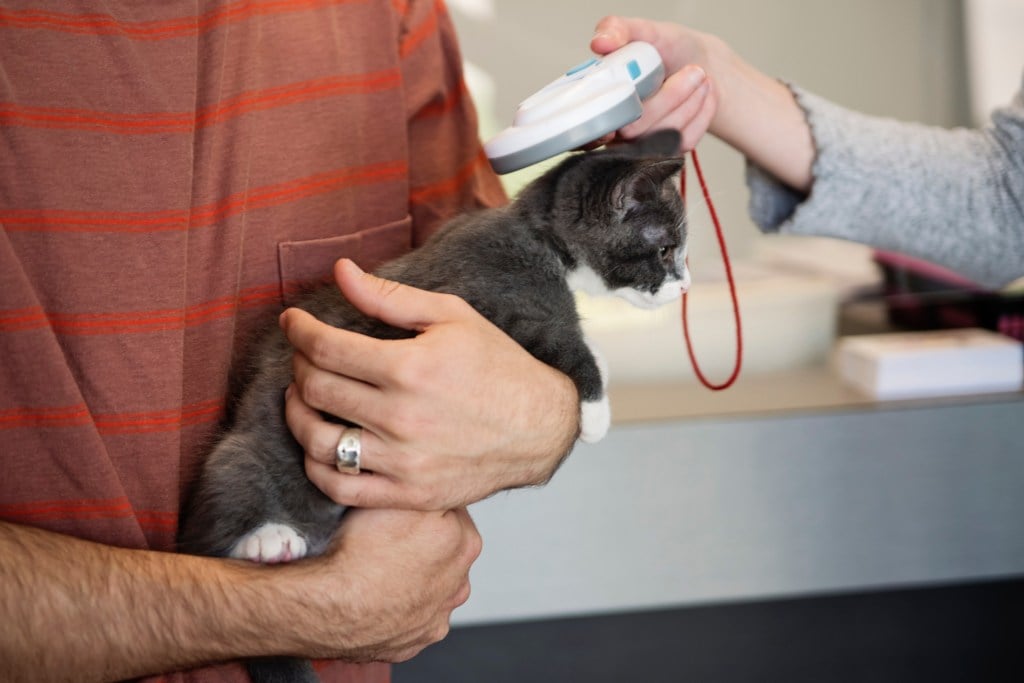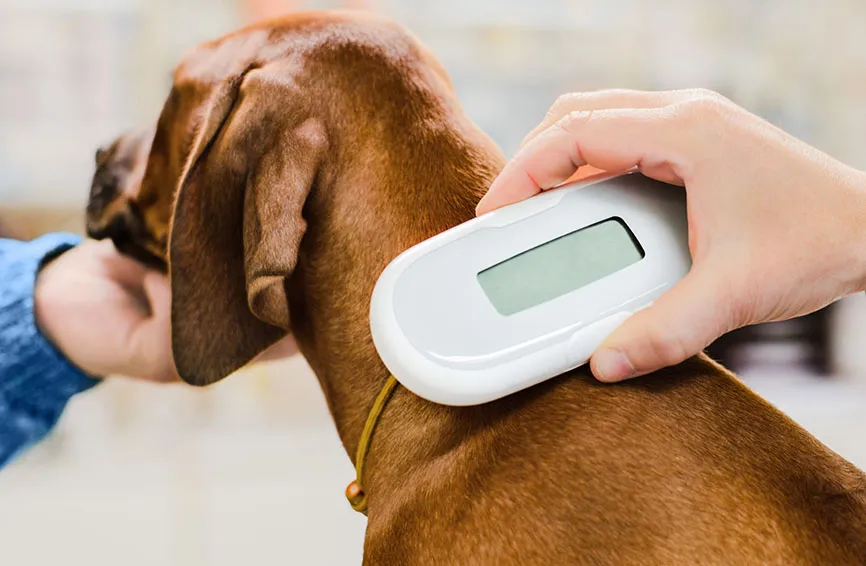Key Takeaways
- Microchips are implanted under a pet’s skin and help you find your pet in an emergency.
- Microchips are about the size of a grain of rice and are virtually painless to pets.
- Animal shelters commonly host events to have pets microchipped.
- The health risks of microchips are very minimal.
- Also, ensure your pet has a collar that fits well and an ID tag for identification.
Table of Contents
There is no worse feeling than losing your dog or cat. If this ever happens to you, you will want to know you have done everything possible to locate your pet. That means planning ahead and making sure your pet is microchipped and registered.
Microchips for pets are implanted under your pet’s skin in a virtually painless procedure. In the event of an emergency or lost pet, the microchip can reveal your pet’s identity and your contact information. Read on to discover how and why you should microchip your pet.
What is a microchip?
A microchip, about the size of a grain of rice, is an electronic chip with an identification number. It is implanted under your pet’s skin using a needle and emits radio waves that can be scanned to read the device. A microchip in pets is NOT a satellite-based tracker. It won’t help you pinpoint your pet’s location, like a GPS collar does.

How is it implanted?
A hypodermic needle injects the microchip under the skin. The procedure is no more painful than a routine shot. A veterinarian can implant a microchip; animal shelters often provide the service when you adopt a pet.
Where can I get the procedure done?
Veterinary clinics are the number one place to have a microchip implanted. Animal shelters often hold events where you can have your pet microchipped for free or at minimal cost. If you adopted your dog or cat from a shelter, odds are they already have a microchip; check your adoption papers before scheduling with your vet.
What is the purpose of a microchip?
Microchips are used for identification. If a lost pet is found, the person can take the pet to a local animal shelter or veterinary hospital to scan for a microchip. When the chip is scanned, a unique ID number registers within a national database, displaying your pet’s name and home address. If your cat or dog has a serious health condition, this information is also displayed, helping shelters and clinics provide emergency care for your pet. Some pets are escape artists or may lose their collars and ID tags, and the microchip is a fail-safe way to identify your pet.
Microchipping your pet greatly increases the odds that he or she will be returned home after an escape attempt. In fact, a study by the American Veterinary Medical Association found that microchipped animals are far more likely to be returned to their owners. In that study of 7,700 lost animals, microchipped stray dogs were returned to their owners at more than double the rate for all dogs. For stray cats, the difference in return rates was even more dramatic.
Healthy Paws consulting veterinarian Dr. Zac Pilossoph says he has personally seen the value of microchipping. “I work at ER hospitals all over the country, and especially during the night shift, we get dogs brought in all the time by people who find them missing. Most do not have microchips, but those that do are reunited most often,” he said.
He tells one story about a dog that was being groomed by a mobile service and took off or was stolen. Three months later, the dog was found wandering around with a microchip from its original owner and a microchip from the person who stole it. The original owner was contacted and got their dog back. That wouldn’t have happened without the microchip.
Are there any health risks?
Improperly implanted microchips can sometimes migrate or become infected, but these risks are virtually eliminated if the procedure is done by a licensed veterinarian or clinic.
Implantation of the chip is virtually painless, and there are minimal health risks if the implantation procedure is done correctly. If you haven’t done so, ask your vet about microchipping your pet as soon as possible.
If my pet is chipped, is there anything else I should do?
Even if your pet is chipped, you should still outfit them with a well-fitting collar and ID with your contact info. If someone finds them, they can call you right away instead of having to go to a vet and have them scanned for a microchip.
Once your pet is microchipped, there are only three things you need to do, AVMA advises:
- Make sure the microchip is registered. You will need to know the name of the chip manufacturer and the microchip number, which your veterinarian or pet rescue can provide. If you have the 9-,10- or 15-digit number on the chip, you can also use the American Animal Hospital Association (AAHA) registry lookup tool to find the name of the company that produced your chip. Once you have this information, you register your pet on the website of the company that matches your chip. You can also use a microchip registry that partners with the chip manufacturers.
- Ask your veterinarian to scan your pet’s microchip at least once per year to make sure the microchip is still functioning and can be detected.
- If you’ve moved, or if any of your information (especially your phone number) has changed, update your microchip registration in the manufacturer’s database as soon as possible.







